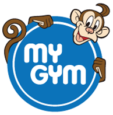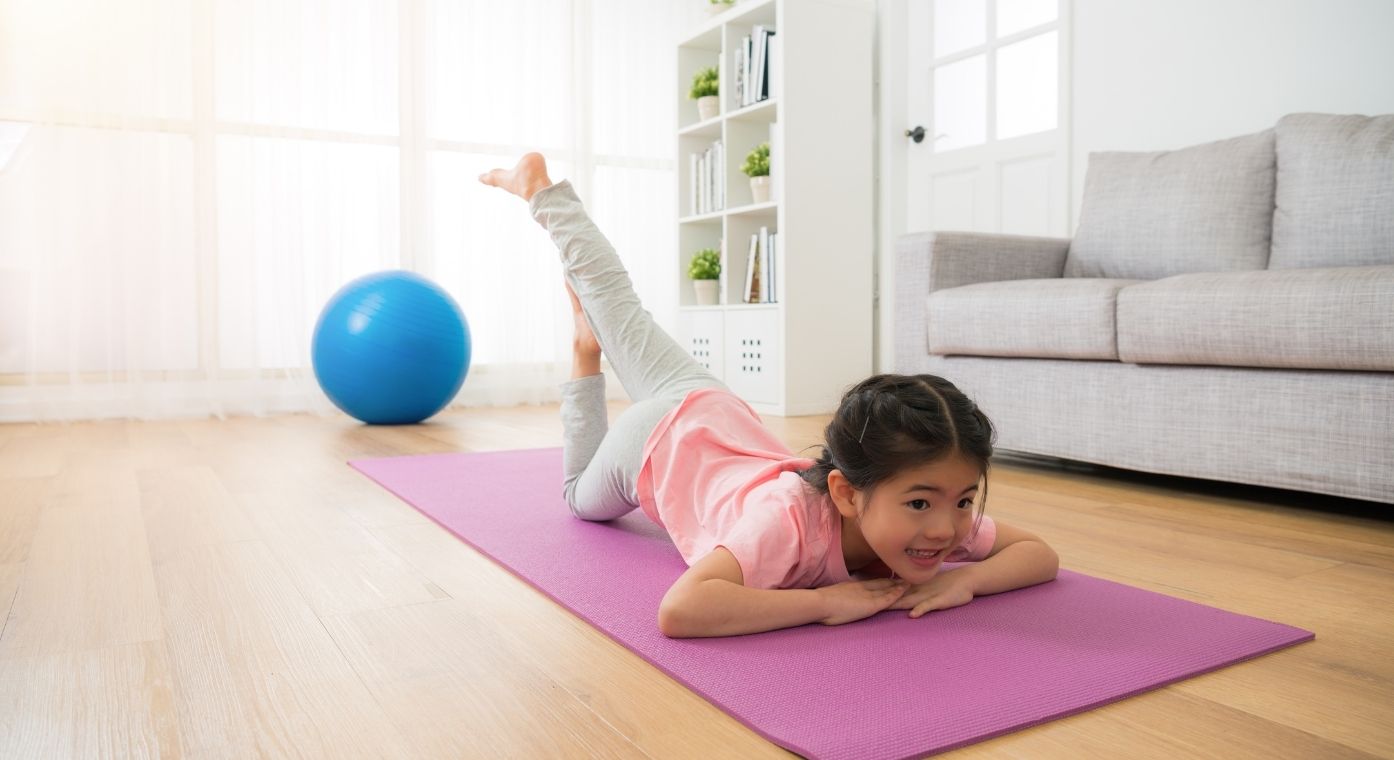Gymnastics Classes for Children
Gymnastics is exciting, adventurous and among the most engaging of sports and the most well-designed exercise programs available to children. But there is a primary question that continues to do the rounds. How in the world can babies do gymnastics? As it is commonly associated with complex movements and requires highly refined balancing — skills that are beyond a baby’s abilities.
It is also wrongly assumed that baby gymnastic programs are little more than ‘stay and play’ sessions usually found in a daycare centre. Nothing is more wrong than right.
Allow us to clear the air and put these questions to rest. Let us explain and clarify the reason why mothers needn’t be asking such questions in the first place!
Understanding “baby” gymnastics
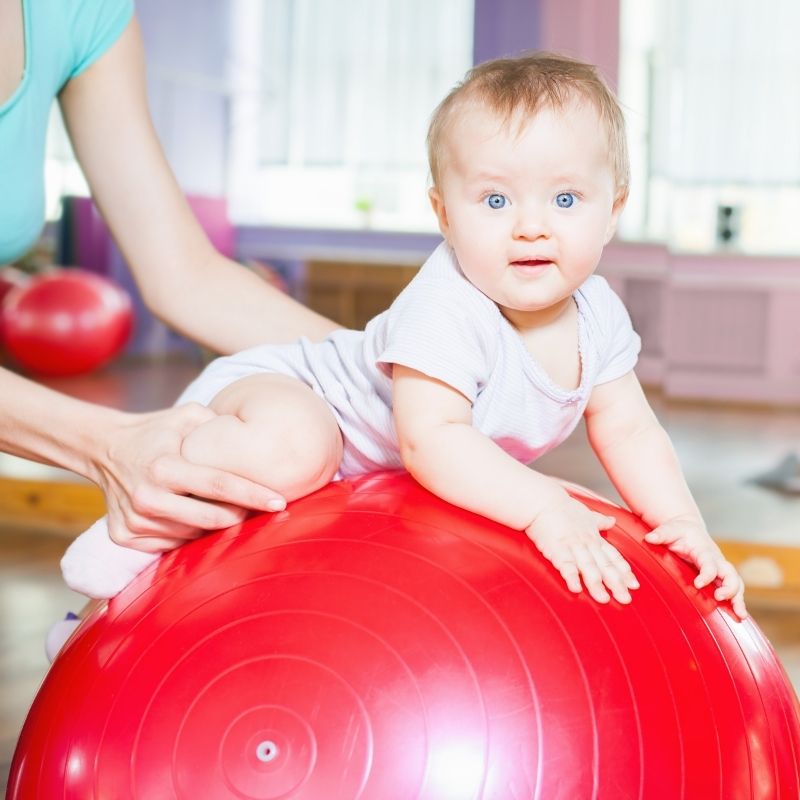
The first thing is to have a clear idea that babies do not do gymnastics in the traditional sense of the word. Definitely not cartwheels, flips or any of the advanced movements. These skills, as you are aware, require years of practice, training, and commitment.
Baby gymnastics classes are a structured set of activities built into a carefully designed curriculum. Babies participate in a series of well-planned activities and are not simply left to roam around playing. This is very important to understand.
In essence, baby gymnastics classes involve activities that range from simple interactions with items such as sensory balls, wands, silks etc, to practising skills such as teaching your baby to put her hands out when she is held upside down. Each of the activities aims to help babies reach simple development goals.
Baby gymnastics is among the most useful exercise programs available to children as it instils a number of skills into one activity that helps build strength, flexibility, speed, balance, coordination, power and discipline. The sooner babies start, the better it will be for them. The reason is simple, babies develop at a fantastic rate in the first three years of their lives.
Give your baby a headstart
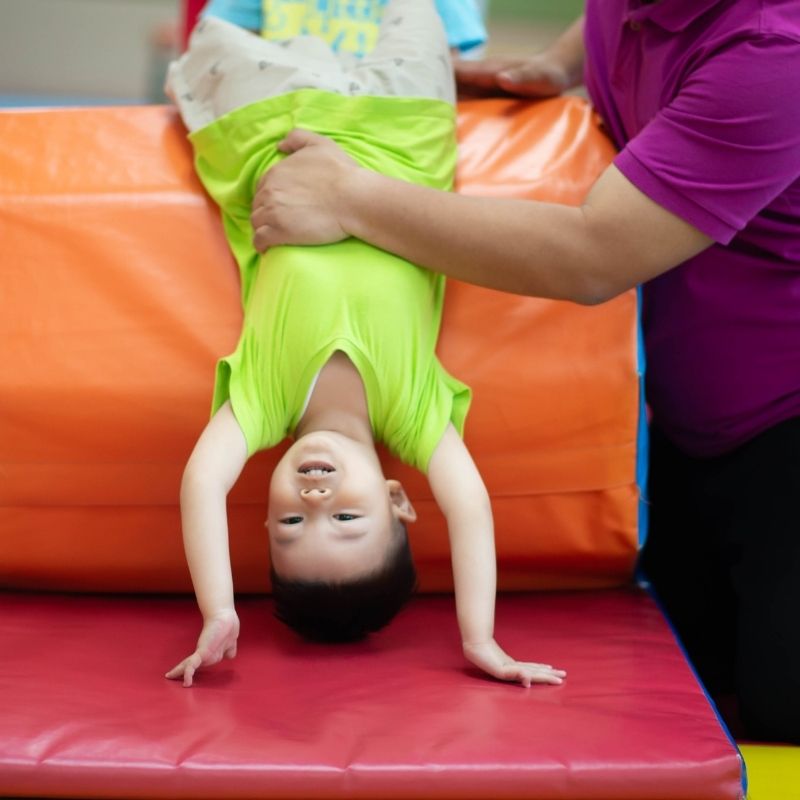
Remember, even before babies are born, the process of rapid muscle development would have already started within the womb. Babies wiggle, kick, roll and generally don’t remain still – ask a young mum. This is a universally good sign of healthy development of the baby taking place naturally.
Once babies are born, their muscles develop even more rapidly and this happens within the first 12 – 18 months. This is why it is really important to help babies move as much as they can. Develop their joints, muscles, bones and the ability to control their bodies. It is this development that becomes the cornerstone of baby gymnastics classes.
All of the activities in gymnastics classes focus around developing one or more of the core developmental abilities that babies and young children need to master. Enabling them to roll, crawl, balance, walk, run, and eventually climb, flip, somersault, and be able to do just about anything else you can think of.
These core motor skills provide the foundation for all other movements in life and by practising and developing them early, you can give your little one a head start.
Helps your child grow confident

Young children get to face many physical and emotional challenges in life, most of what they face are new and challenging. This is why equipping them with the skills they need from a very young age builds confidence in ways not imagined before.
The ability to master complex movements helps foster a sense of achievement and builds self-esteem in children. A healthy mix of fun and challenges encourages children to extend themselves, both mentally and physically. And with each skill that a child learns, confidence grows.
Additionally, the skills learned in a gymnastics class are transferable to all other sports. A foundation in gymnastics helps children to tackle every other activity with confidence and courage.
Participating in gymnastics gives children an opportunity to communicate with other children of the same age, work together and function as team members. It also helps young children interact and engage with other adults. Enhanced social skills such as listening, following directions, taking turns, being quiet and respecting others, will enable your child to grow up well-integrated and prepared for life outside of a home.
Healthy body, healthy mind
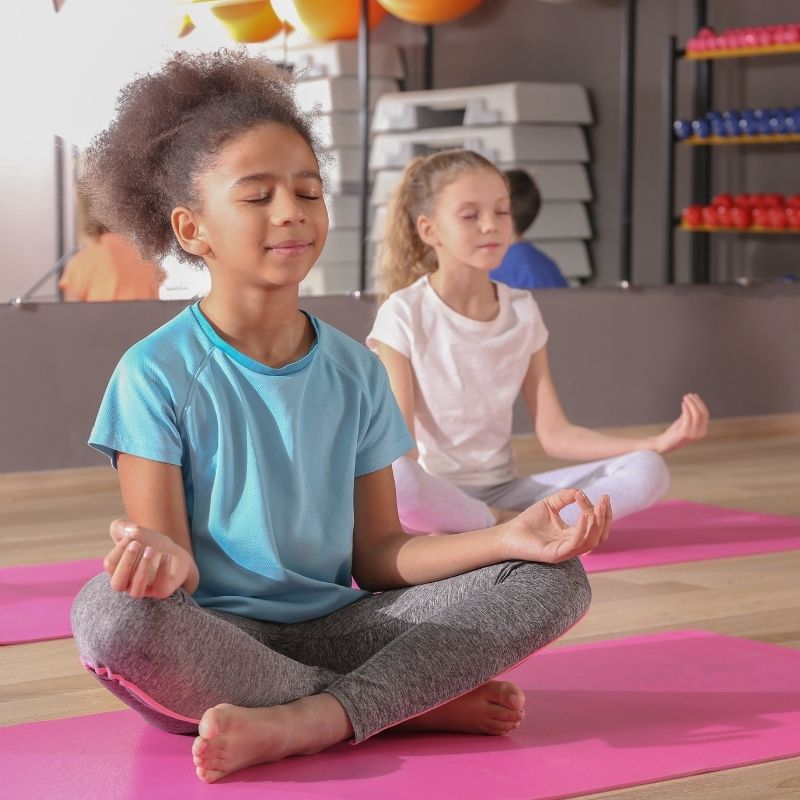
Taking part in any type of activity helps your baby to keep physically active and stay healthy. In addition to increasing fitness and strength, gymnastics programs help children build a good appetite. Eating the right foods serves as fuel for the body and helps to keep in shape.
Young children who get into healthy eating habits have lower rates of obesity and reduce the risks of lifestyle diseases such as non-hereditary heart disease, and Type-2 diabetes.
Recent studies indicate that one in ten children are obese by the time they start primary school, therefore encouraging moderate and vigorous activity among children is important to reverse this unhealthy trend.
Nurturing goal setting
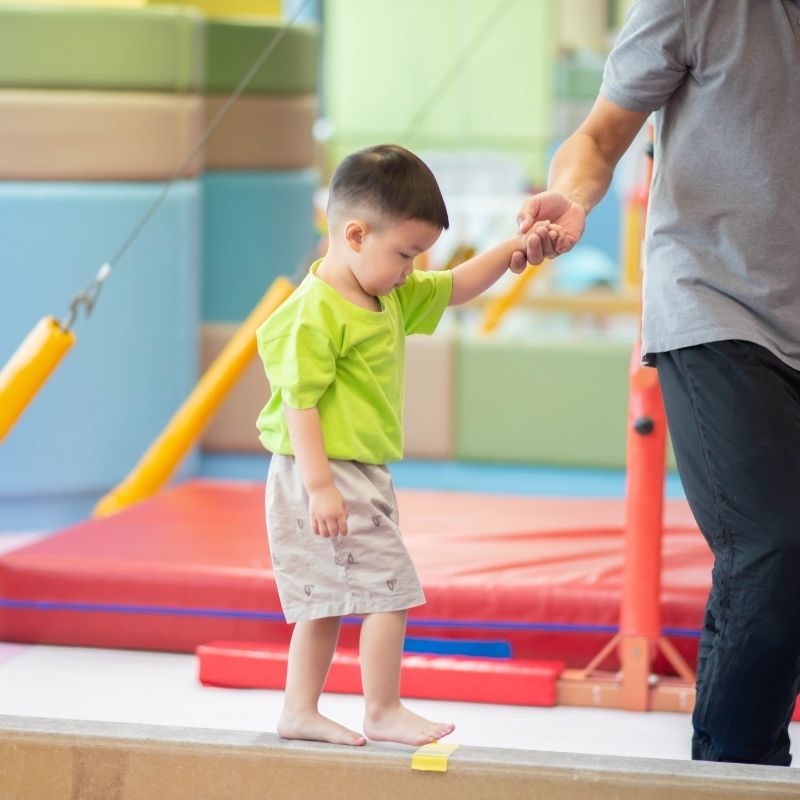
Proficiency in gymnastics is gained in stages and with consistent practice. The thrill that young children experience when they acquire the ability to perform a new move that they couldn’t do a week or two earlier is a strong motivator. This becomes a perfect driver for them to set more difficult goals for themselves to continue to learn and grow their skills.
Children also learn that if they commit to something, hard work and dedication will pay off. Gymnastics also promotes concentration — a trait that comes in handy to help face everyday life, in particular when they are ready to go to a formal school.
Through gymnastics, children discover that even on days when they try their best, they can still have a day that doesn’t go too well for them. Learning early to be gracious when things don’t go too well, teaches young children to stay positive. And following rules and codes of conduct help children to learn about safety and teaches them to have respect for others.
Developing a sense of time & timing
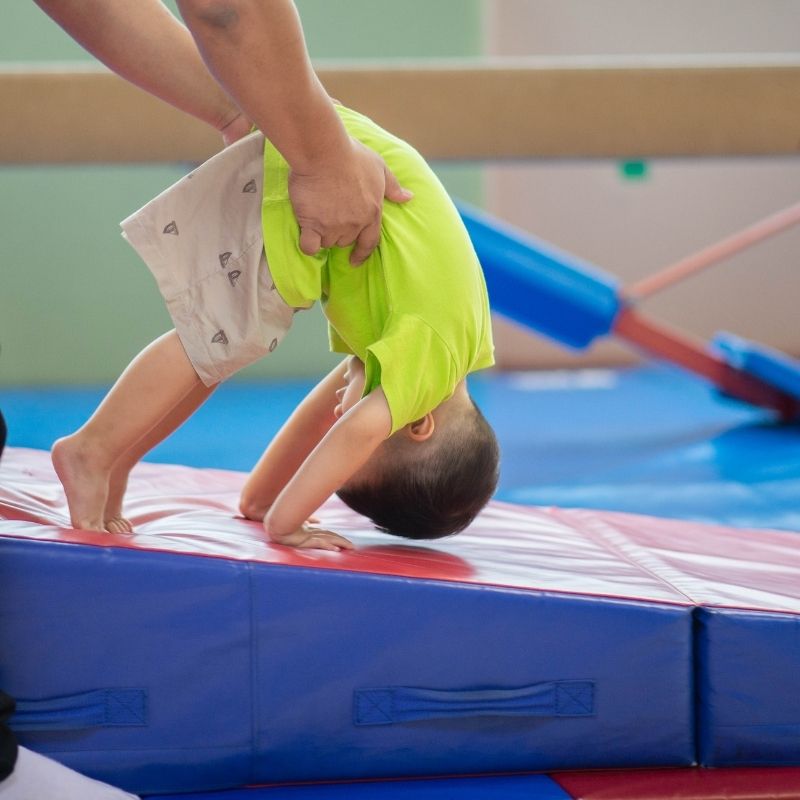
While these are two different concepts, gymnastics teaches children to develop a keen sense of timing and time management. Timing is essential in gymnastics – it’s what helps a child know the right moment to jump, move and land on her feet.
Time management, on the other hand, is the ability of a child to balance her life. Prioritizing some activities over others. Time management is an essential skill that is useful to excel in academics, building relationships, and at the workplace. Studies have shown that children learn cognitive skills more effectively in an environment that combines the body as well as the mind. The Intense movement that takes place during a gymnastics class helps open up new neural pathways in the brain.
This means the brain is ready to be wired to increased concentration, focus and success. Help teach children to recognise and learn how to connect what the brain is saying to what the body is actually doing.
Kickstart literacy skills
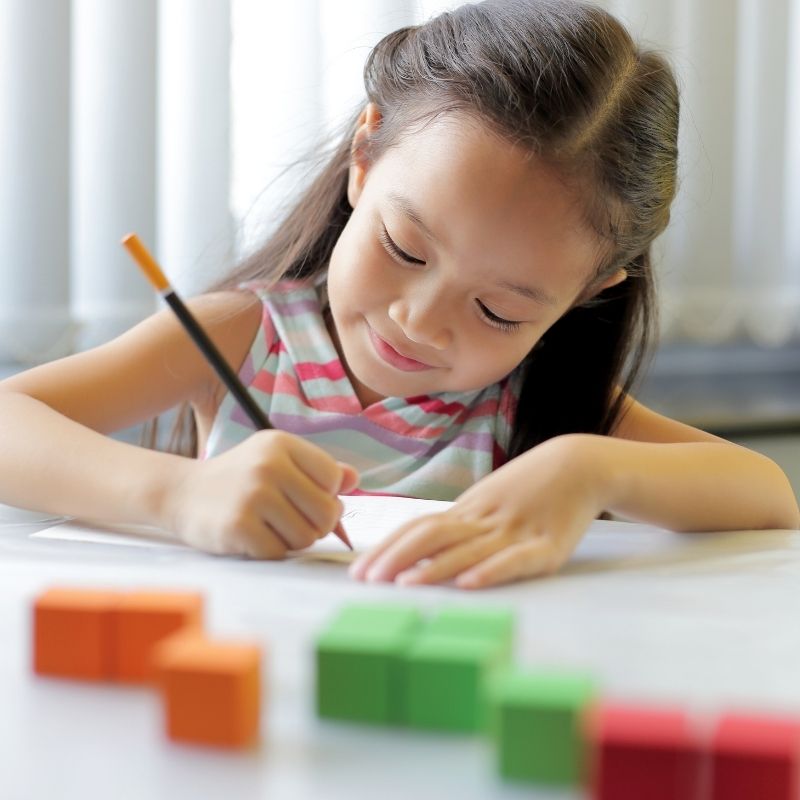
Most of the technology that children are exposed to these days serves to decrease their attention spans, but by participating in gymnastics classes, parents can help offset these adverse effects of modern day lifestyle. Through gymnastics, children can also enhance their ability to pay attention to learn and listen, which are powerful skills that improve understanding, mental engagement, and informed decision-making in everyday life.
Another surprising effect of gymnastics is increasing a child’s readiness to read. The primary reason for this is that as children learn to follow the verbal instructions of their instructor during early childhood, they’re developing their listening and comprehension capabilities.
Grasping the sounds and pronunciation of words quickly. In addition to these abilities, intense physical movement helps to strengthen cognitive function through increased blood flow to the brain, which also boosts literacy skills.
Growing stronger every day
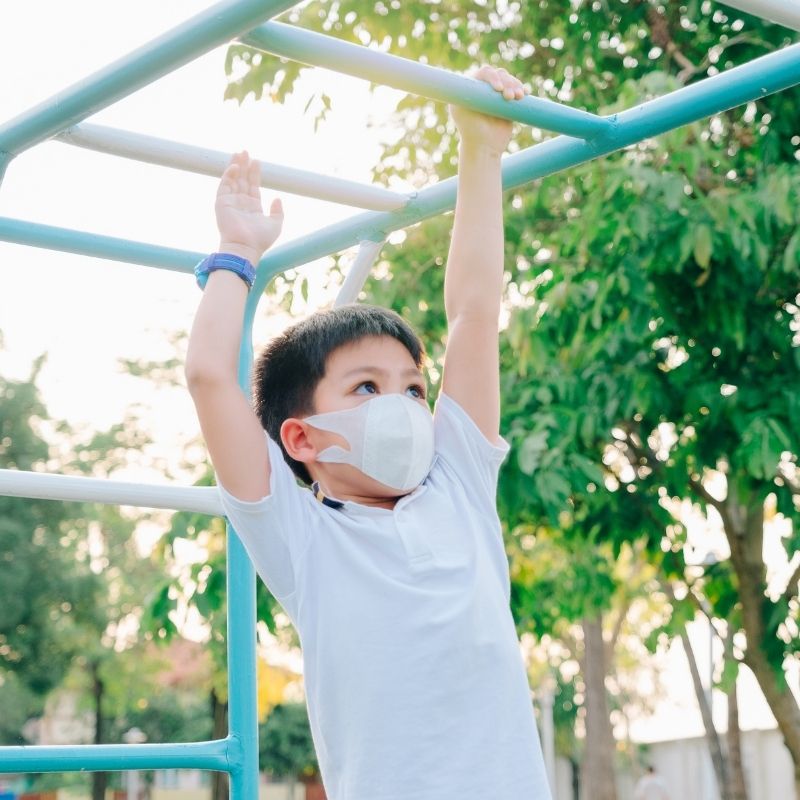
Children involved in gymnastics from a young age build a solid foundation for all-around muscle strength, endurance and power. Have an excellent strength-to-weight ratio. Gymnastics also promotes strength of character — with increased activity comes an increase in endorphins, leading to happier more positive feelings. Children tend to stay calmer under pressure. As they learn to control their nerves and channel their anxiety into their performance.
The skills gained through gymnastics, such as focus and breathing, increase a child’s ability to cope with stress. Enabling children to regulate their emotions in adverse situations. Remain positive by understanding that their performance need not influence or define their sense of self-worth.
On top of it all, participating in gymnastics is fun. Children learn to tumble, flip, swing and make their bodies go through movements they never thought possible before! There is no end to learning, pick up something new in every class. It encourages children to be bold and to explore and push the capabilities of their bodies.
My Gym
Gymnastics for toddlers and young children is an important, well-rounded sport that can significantly improve their mental and physical health. When taught and performed correctly, it’s one of the safest sports to engage in. The benefits of gymnastics last a lifetime!
My Gym has dedicated and passionate trainers. It is fully equipped with a wide selection of equipment and with safety measures all in place to offer children the opportunity to learn multiple skills. Our classrooms are thoroughly sanitized every day — the tables, the chairs, the children’s activity stations and everything else the child might touch is made safe and clean.
Depending on what might be best for you and your child, My Gym offers evaluations and performances as a way of tracking and motivating the progress of its young pupils.
For more ideas and what else you and your child can learn through play, visit My Gym. Choose a day when you will be relatively free and come over with your child in tow. Your child could be an infant (as young as 6 months), toddler or a preschooler, age is not a bar.
We work in partnership with you and strive to provide the best learning experiences. Laying a firm foundation for your child’s personal, academic and future growth.
Please note: My Gym classrooms are thoroughly sanitized every day — the tables, the chairs, the children’s activity stations and everything else the child might touch is made safe and clean. Please wear a mask, wash hands frequently, and practice social distancing.
Frequently Asked Questions
What is the youngest age for gymnastics?
Gymnastics for toddlers can be initiated as early as infancy, precisely between the ages of 7 and 18 months. Though the structure of gymnastics for babies differs from the regular programs, it is meticulously designed to introduce infants to simple physical development exercises that help them develop muscular strength, a sense of coordination between action and movement, and learn the skill of balancing.
How do I teach my baby to do gymnastics?
As nurturing parents, encourage your child to roll, crawl, balance, walk, run, climb, and flip in the course of pursuing daily activities such as grabbing a toy, fetching a cap, or simply eating food. Baby gymnastics programs engage toddlers in basic exercises that promote the development of cognitive skills, motor skills, and social skills.
What are the benefits of gymnastics for kids?
Gymnastics classes for children are meticulously designed to give them a head start during the crucial early childhood stages when an infant’s physical and cognitive skills grow rapidly. Children gain confidence in their natural abilities and are able to engage more effectively with others in their environment. Gymnastics teaches children about timing and time management. Gymnastics improves children’s literacy skills as well as their concentration.
Does gymnastics help children gain flexibility and strength?
Gymnastics refers to a set of physical development activities that help relieve muscle and joint stiffness, facilitating smooth bends, stretches, twists, and turns of the body. Gymnastics improves flexibility, muscular strength, and muscular endurance in children from early stages of development, ensuring that they continue to practise these exercises for a healthy future. Gymnastics also sharpens cognitive and social skills, especially when children participate in such activities throughout their early childhood.

